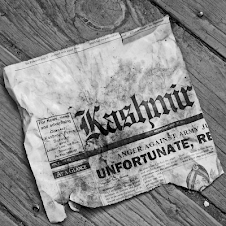I am not sure how far defining Kashmir as “Peer Waer” is justified, but as long as I can remember I have always heard people saying this with utmost conviction. Every discussion would end on the same point, irrespective of the body of discussion, political, social and economical. People of Kashmir have always taken pride in belonging to the place which has also been known as Land of Saints. And why not, being bestowed with the immense natural beauty and serene environment Kashmir has been devoted to the religious wealth it has acquired through centuries.
The very fabric of the same society has been torn apart by the revelations which have come up in the recent past. While corruption is nothing new in this state but its intrusion into the fundamental blocks on which a society stands, has come as a shock.
It all started with few hundred deaths of infants, in the only pediatric hospital in Srinagar. With the committee’s formed and investigations done nothing concrete ever came up. People who were suspended were later re-instated at the same or higher positions. The blame game continued, till people remembered no more. The public memory in Kashmir, like other places is short term, where a hue and cry rises about an incident and then people forget about it, a complete blackout happens as nothing ever had happened. And, now the deaths have reduced, not because some serious cognizance has been taken about the unfortunate events that took place, but because less people visit the hospital now. Parents think hundred times before making the decision of going to the only paediatric hospital. This was later followed by a fake drug scam. Again something related to the health sector. The medicines containing chalk and clay were being fed to the patients in government hospitals as life saving drugs and other emergency medicines. Many a doctors attribute the deaths in paediatric hospital to this fake drug scam. And, who knows how many more deaths which happened in hospitals or at other places were because of these medicines. Not even considering, how many patients suffered pain because what they thought of as medication was clay and chalk, with no medicinal value at least to improve health.
As if this was not enough, a crude disclosure of self proclaimed dervish came to fore. He was arrested on the charges of rape. Exploiting young girls at his so called institution and making them believe that it is spiritual in nature. Could it get worse? Primarily, if these things happen anywhere, they are condemnable but someone who the society thinks is propagating a religion and its teachings, this is utter disgrace. Not only for the fake dervish, but for the people who trusted him with their sons and daughters. Also, the infamous CET paper leak scam, where allegedly the chairman of BOPEE is involved. In this case even the parents were involved in purchasing the entrance papers for their wards. Meritorious students were denied admission to the Medical College while the undeserving students indulged in corruption made it by means of buying the papers. And, tomorrow when they complete their degrees and practice medicine in hospitals, it probably would be a nightmare for patients.
Lately, Kashmir has so much been intertwined in corruption and its related activities not only economically but socially and spiritually as well, without realising where the society is headed. Ironically, these activities have placed fear and scare among the common man that they no longer trust the institutions and the individuals. And, how would they? There have been so many betrays, at all levels.
It’s high time that people wake up because the political class is already in deep slumber and they for the rest of the times to come would do nothing but form committees and order inquiries. We as a society have to decide if this is where we want to live or commit to memory the mistakes we have made and make sure that the culprits are punished and let our society grow on merit.






